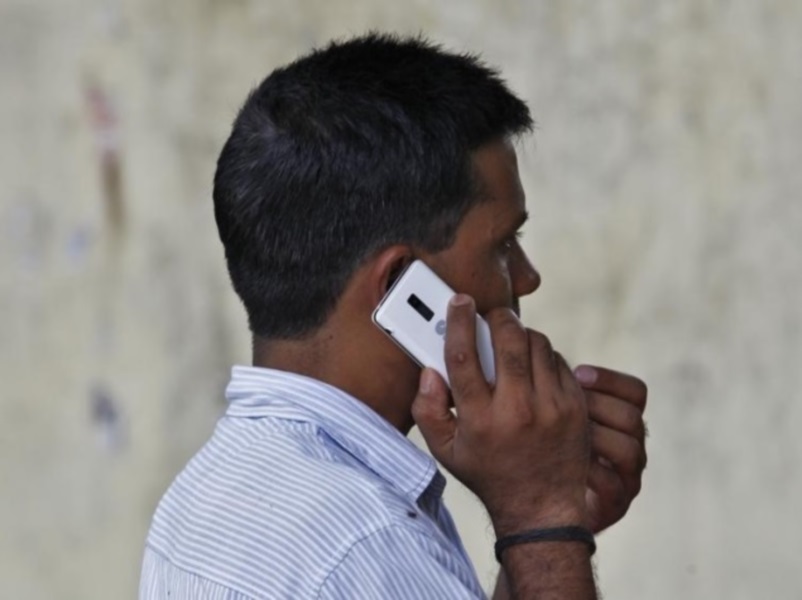- Home
- Internet
- Internet News
- Stark Digital Divide Exists Between States: Assocham
Stark Digital Divide Exists Between States: Assocham

Tele-density, the number of telephone connections for every 100 individuals, points to a stark 'digital divide' with large population in Bihar, Assam, Madhya Pradesh and Uttar Pradesh still being deprived to communicate with the rest of the country, industry body Assocham said in a paper.
Deeper tele-density and a quality service is critical to the government's Digital India programme, which has been launched to reach government services to the citizens through e-governance, it said.
"The digital divide is clearly visible between different states with some of the eastern states not finding favour with the telecom service providers. The reasons may vary between the lack of infrastructure like power availability to even indifference in terms of business opportunities," it added.
Against the national tele-density of 81.82 percent, the figure for Bihar is dismal 54.25 percent, Assam 55.76 percent, Madhya Pradesh 62.33 percent and Uttar Pradesh 62.74 percent.
On the other hand, the tele-density in Delhi is over 238 percent, whereas that of Himachal Pradesh is 123.19 percent. The paper said the Himalayan state with difficult terrain is only next to Delhi in terms of tele-density. Other states mapping rather well on the telecom prosperity are Tamil Nadu, Punjab, Karnataka and Kerala.
Assocham said the Centre with the help from the state governments should double the efforts to ensure that both the government owned BSNL and the private telecom service providers should reach the states with low tele-density, or else the digital divide can get deeper.
"The government's own programme of laying the broadband services would play a critical role," it added.
Catch the latest from the Consumer Electronics Show on Gadgets 360, at our CES 2026 hub.
Related Stories
- Samsung Galaxy Unpacked 2025
- ChatGPT
- Redmi Note 14 Pro+
- iPhone 16
- Apple Vision Pro
- Oneplus 12
- OnePlus Nord CE 3 Lite 5G
- iPhone 13
- Xiaomi 14 Pro
- Oppo Find N3
- Tecno Spark Go (2023)
- Realme V30
- Best Phones Under 25000
- Samsung Galaxy S24 Series
- Cryptocurrency
- iQoo 12
- Samsung Galaxy S24 Ultra
- Giottus
- Samsung Galaxy Z Flip 5
- Apple 'Scary Fast'
- Housefull 5
- GoPro Hero 12 Black Review
- Invincible Season 2
- JioGlass
- HD Ready TV
- Laptop Under 50000
- Smartwatch Under 10000
- Latest Mobile Phones
- Compare Phones
- OPPO A6 Pro 5G
- OPPO A6s
- OPPO Reno 15 Pro Max
- Honor Win RT
- Honor Win
- Xiaomi 17 Ultra Leica Edition
- Xiaomi 17 Ultra
- Huawei Nova 15
- Asus ProArt P16
- MacBook Pro 14-inch (M5, 2025)
- OPPO Pad Air 5
- Huawei MatePad 11.5 (2026)
- Xiaomi Watch 5
- Huawei Watch 10th Anniversary Edition
- Acerpure Nitro Z Series 100-inch QLED TV
- Samsung 43 Inch LED Ultra HD (4K) Smart TV (UA43UE81AFULXL)
- Asus ROG Ally
- Nintendo Switch Lite
- Haier 1.6 Ton 5 Star Inverter Split AC (HSU19G-MZAID5BN-INV)
- Haier 1.6 Ton 5 Star Inverter Split AC (HSU19G-MZAIM5BN-INV)
-
 Dora and the Search for Sol Dorado Now Streaming on JioHotstar: Everything You Need to Know
Dora and the Search for Sol Dorado Now Streaming on JioHotstar: Everything You Need to Know
-
 Qualcomm Unveils Robotics-Focused Dragonwing IQ10 Series SoC, Expands IoT Portfolio Ahead of CES 2026
Qualcomm Unveils Robotics-Focused Dragonwing IQ10 Series SoC, Expands IoT Portfolio Ahead of CES 2026
-
 Samsung to Double Galaxy AI Mobile Devices to 800 Million Units This Year
Samsung to Double Galaxy AI Mobile Devices to 800 Million Units This Year
-
 Poco M8 5G Colourways, Battery Details Revealed Ahead of January 8 Launch in India
Poco M8 5G Colourways, Battery Details Revealed Ahead of January 8 Launch in India











